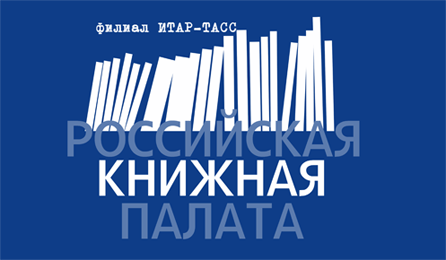Goncharova I.V., Chuvardin G.S. Communes of the Central Black Earth Region from “war communism” to collectivization: Design and implementation // The Russian Peasant Studies. 2018. V.3. №4. P. 105-122.
DOI: 10.22394/2500-1809-2018-3-4-105-122
Annotation
The article considers evolution of the Bolsheviks’ policy starting from the introduction of communes in the village as a socialist way of rural life in the post-revolutionary period. The archival materials of the Central Black Earth Region prove the idea of the authorities to create collective farms of commune type, which was determined by the revolutionary euphoria, and show the results of implementing this project in the agricultural center of the country during the NEP. The village communes (collective peasant associations) of the Orel Region depended on the state subsidies and state land fund. The social portrait of these communes’ members and their estimates of the communes prove that some former noblemen tried to adapt to the new Soviet reality under the Charter of the commune to preserve their ‘gentry nests’ from land redistribution. The most important factor determining the life of village communes in the 1920s — early 1930s was their changing role in the state ideology and policy. During this period, the position of the Bolsheviks changed according to the strategic aims of the state agricultural policy. Under the NEP, when market relations and private initiative were allowed, the communes were considered exemplary farms of the future showing peasants a new way of everyday life and joint farming. Their economic unprofitability was ignored due to the task of cultural education of local peasants, which became an additional incentive for peasant entrepreneurs to enter communes and to use state subsidies to improve their financial situation. Communards’ children had a good chance for education which was an important social lift of that time. The state collectivization policy radically changed the official attitude to village communes — they were thoroughly checked and strongly criticized. Thus, the multi-form agricultural sector was destroyed and the agricultural artel was declared the dominant form of collective farming. The primary task of new collective farms was to leave peasants without means of production and investments. Moreover, under the socialist experiment peasants simply disappeared as its observers and turned into collective farmers, i.e. participants of the experiment.
Keywords
Peasants, Central Black Earth Region, village communes, collective farms, authorities, Bolsheviks, collectivization.
About the authors
Goncharova Irina V., DSc (History), Professor, Department of Russian History, Orel State University named after I.S. Turgenev. 302026, Orel, Komsomolskaya St., 95.
E-mail: This email address is being protected from spambots. You need JavaScript enabled to view it.
Chuvardin German S., DSc (History), Professor, Department of Russian History, Orel State University named after I.S. Turgenev. 302026, Orel, Komsomolskaya St., 95.
E-mail: This email address is being protected from spambots. You need JavaScript enabled to view it.
Chayanov A.V. Letter from A.V. Chayanov to V.M. Molotov on the current state of agriculture in the USSR compared with its pre-war state and the situation in agriculture of capitalist countries (October 6, 1927) // The Russian Peasant Studies. 2018. V.3. №3. P. 6-18.
DOI: 10.22394/2500-1809-2018-3-3-6-18
Annotation
Alexander Chayanov wrote this analytical note to Vyacheslav Molotov in early October 1927 to discuss plans for the agricultural development of the first five-year plan in the USSR. Chayanov begins with a brief review of the history of world agriculture in the early twentieth century. He identifies two poles in this evolution: western (American — typically North America and partly South America, South Africa, and Australia) and eastern (Indian-Chinese, typically agrarian overpopulated countries). The American type of agricultural development is based on farms that use machinery and wage labor and are controlled by the vertical system of financial capitalism. The Indian-Chinese type of agricultural development is characterized by agrarian overpopulation of the peasantry under dominant pre-capitalist relations, exceptional labor intensity, and widespread bondage rent and credit. The rest of the world’s regions can be placed between these two poles. In the late nineteenth and early twentieth centuries, Russia is a paradoxical, complex mixture of these two types. Chayanov believed that in the agrarian science of pre-revolutionary and prewar Russia, these polarized agrarian worlds were reflected in the agrarian-economic disputes of the so-called “southerners” and “northerners” about the strategy of agricultural development. “Southerners” insisted on turning Russia into a “hundredpercent America” by the forced development of farmers’ agriculture. The “northerners” suggested supporting the regional strata of the middle peasantry and its own vertical cooperation to prevent the seizure of the village by trade and financial capital. Chayanov considered himself a “northerner”. He argued that the post-war, post-revolutionary village has changed significantly. First, the younger generation of peasants who had experienced the world war and Russian Revolution set the tone. Second, the Soviet agronomic science and cooperation of the 1920s contributed to the real progress of peasant farms. Soviet Russia has a unique chance to find a fundamentally new path of rural development, thus avoiding the Scylla of Americanfarmers’ dependence on financial capital and the Charybdis of the Indian-Chinese stagnation of peasant overpopulation. Instead of American vertical agrarian integration through the dominance of financial capital over farmers, Soviet vertical integration was to promote the development of diverse forms of peasant cooperation with the support of the socialist state. In the final part of the note, Chayanov considers the ratio of industry and agriculture in the first five-year plan and predicts a radical socialtechnological change under agricultural industrialization. The Soviet leadership ignored the ideas of this note: Stalin rejected Chayanov’s democratic type of vertical cooperation of the peasantry and preferred a horizontal type of cooperation in the form of collectivization. The publication with comments was prepared by A.M. Nikulin.
Keywords
Agrarian policy, peasants, farmers, agricultural cooperation, agrarian capitalism, socialist agriculture, ways of agricultural development.
About the authors
Chayanov Alexander V.
Editor: Nikulin Alexander M., PhD (Economics), Head of the Center for Agrarian Studies, Russian Presidential Academy of National Economy and Public Administration; 119571, Moscow, Prosp. Vernadskogo, 82.
E-mail: This email address is being protected from spambots. You need JavaScript enabled to view it.
Translator: Trotsuk Irina V., DSc (Sociology), Senior Researcher, Center for Agrarian Studies, Russian Presidential Academy of National Economy and Public Administration; Professor, Sociology Chair, RUDN University. Prosp. Vernadskogo, 82, Moscow, Russian Federation, 119571.
E-mail: This email address is being protected from spambots. You need JavaScript enabled to view it.





















